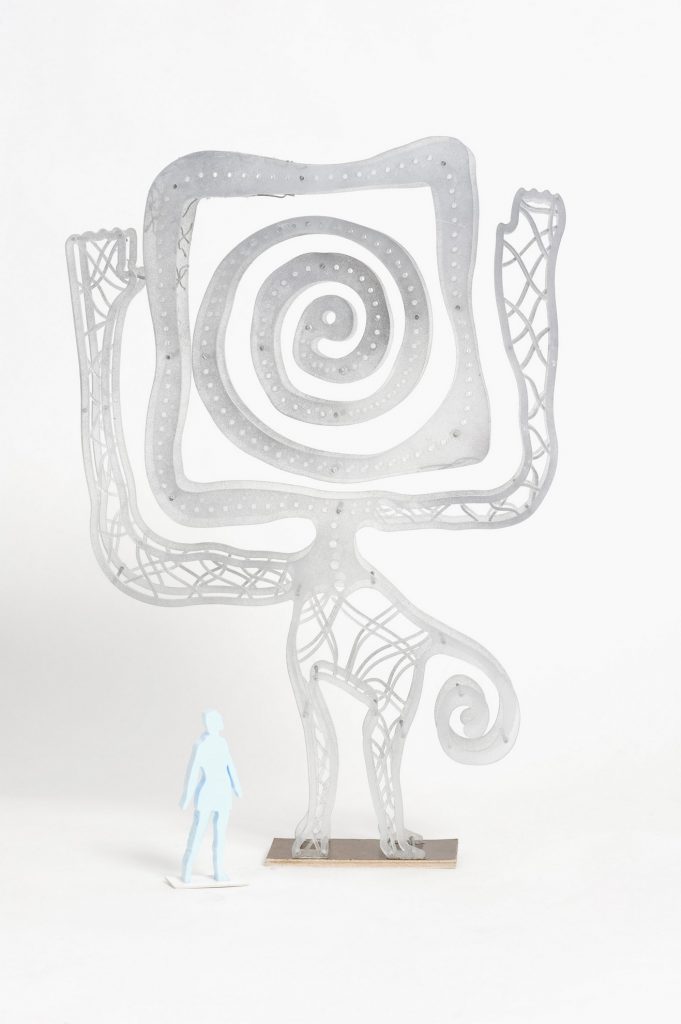Nadim Karam, The Travellers, migration, 2005, Sandridge Bridge
Summary
One of two maquettes for 'The Travellers', a public artwork located on Sandridge Bridge, Melbourne.
The Travellers celebrates Indigenous presence and the meeting of cultures through migration. It comprises ten large-scale sculptures, each approximately 7.5 metres tall and collectively incorporating 3.7 kilometres of stainless steel. Nine of the ten figures are motorised and at regular intervals move along the length of Sandridge Bridge, sited near a former Aboriginal meeting ground and near the landing point where many early migrants stepped ashore. Built in 1888, the bridge is the third to occupy this site, the original constructed in 1853.
Each of the ten figures comprising the work represents a phase of arrival, as historian James Jupp has defined these. The figures, graphic and abstracted in form, are Gayip (Aboriginal period); First Settler (convict period); Melbourne Beauty (gold rushes); Walker and His Tucker Bag (assisted migration); Shelter (displaced persons); Urban Wheel (European migration); Running Couple (refugees); Butterfly Girl (Asian and Middle Eastern migration); Technoman (students and professionals); and Walking Sun (multiculturalism). Below the figures, a series of etched glass panels stretch across the bridge, a component in this history of migration to Australia
This work was commissioned by the City of Melbourne and the Victorian government, and launched in 2005.
